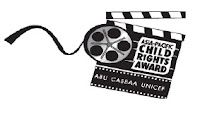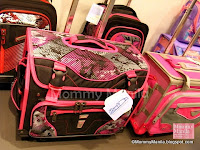 |
| Bar Solution |
As an adult in my 30's, I grew up in the traditional Filipino household who uses detergent bars soaked in water with a foam or sponge placed on the side of the sink for washing dishes.
 |
| Joy Dishwashing Liquid |
Not until recently, upon the invitation of
Joy Dishwashing Liquid for a media press conference, did I fully realize the dangers of using bar solutions for dish washing in the kitchen.
Oh yeah, I know it's not that clean since the used foam or sponge may allow bacteria to grow in. And to use that again for another dish might seem disgusting. But for financial and '
savings' purposes, the common Filipino, dismisses that thought and continues on using the dirty sponge.
 |
| With experts from Philippine Society for Microbiology (PSM) |
 |
| 6 Out of 10 Filipinos still use Dishwashing Bar Solution |
Sadly, most of the household in the Philippines still practice what I just stated in the first paragraph of this article.
Dr. Jessica Simbahan from the
Philippine Society for Microbiology (
PSM) revealed yesterday that
6 out 10 Filipino households still uses a bar solution for washing dishes. Germs and bacteria arising from that practice can cause diseases and health problems which would eventually costs more than the supposed '
savings' from a bar solution.
They further proved for a fact through scientific measurements that a bar solution has 10x more germs than a 3 to 5 days-worn sock. The survey used a
luminometer or germ meter to measure the level of contaminants in bar solutions and commonly perceived dirty household items. The bar solution consistently proved to have the highest level of contaminants among a list of dirty household items that included a toilet seat cover, a toilet bowl rim and a trash can lid.
 |
| Dr. Jessica Simbahan from PSM |
 |
| Luminometer or germ meter |
 |
| Luminometer RLU Reading showed Bar Solution had the highest (more) germ RLU |
On Joy Dishwashing Liquid
Joy Brand Manager Ms. Jan Ang shared, “
Many moms in the Philippines use a dishwashing bar solution, which is made up their leftover laundry soap, water and a dishwashing sponge. These moms believe they are saving money by using their leftover laundry bar to wash dishes. They do not realize that this bar solution is very unsanitary, especially when the bar solution is left exposed for many hours.” As part of Joy’s “‘
Nay, Gising!” campaign, Joy commissioned this survey to serve as a wake-up call for Filipino moms and to educate them on proper kitchen hygiene. Moreover, a new
Joy Antibac is now available in the market - the
Joy Antibac with Power of Safeguard.
 |
| Joy Antibac with Power of Safeguard |
More Studies
In a study from Japan that measure the presence of bacteria in household items, scientists found that the dishwashing sponge was contaminated with several types of bacteria:
E. coli and
Staph. aureus, which both cause food poisoning, and
Ps. aeruginosa, which leads to opportunistic infection.
“A dishwashing bar solution is a breeding ground for contaminants, including bacteria and other types of germs. This is especially true if the laundry bar is left exposed for many hours and the dishwashing sponge is constantly wet,” shared PSM President Dr. Supachai Basit.
 |
| Other Germ Sources Tested |
 |
| 'Nay, Gising!' |
I think it's high-time to rid of the old practice of using the bar solution and exclaim Joy's 'Nay, Gising!' followed by the use of the dishwashing liquid. I'm not trying to sell you Joy (you can try other brands in the free market), I'm selling you a hygienic practice. :)













Comments
Post a Comment